ST PETER’s and THE OLD BLACK LION
This is a collation of a series of blog posts forming the DIG DIARY for a community archaeology project at the Old Black Lion site adjacent St Peter’s churchyard took place between 15-22 July 2024.
Walking down Marefair you might wonder just what is going on!
Much of the back part of the churchyard is screened off. Step behind those screens and you would see that the work has begun.
It’s nice to know that we’ve got a serious Dig going on as the annual Festival of Archaeology 2024 starts up across the UK
DIG DIARY – DAY 1 Monday
The Team assembles.
John Buglass our expert archaeologist gives us an introduction to what it’s all about.
Jobs are allocated. First, the jungle of roots from years of scrub and bushes must be cleared. There’s much more under the surface than expected. It takes a while before the turf and topsoil layer can be stripped. It’s a good turnout of volunteers.
The work is truly underway – helped of course by occasional showers on St Swithin’s Day. Volunteers didn’t know each other at the start of the day, but soon there’s plenty of chat as they work and wonder what they will find.
The top of the stone wall boundary to the alleyway is now visible.
Tomorrow will bring more of the same. Those roots make progress slower. By the end of the day, we know much more about archaeology than when we started!
PUBLIC VIEWING is on SUNDAY 21st JULY 2-4pm
Come along and have a peek behind those screens!
[Images: thanks to B. Coleman]
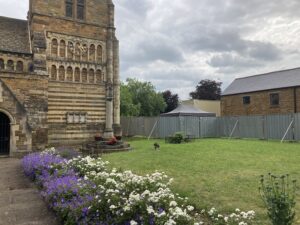
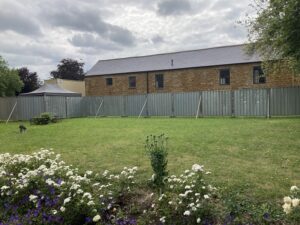
DIG DIARY – DAY 2 Tuesday
No dithering about today. The group settles very quickly to the serious business without delay.
There’s a rota, and everyone gets a shift at the different activities. Digging is along the north section against the Old Black Lion. Soil is sifted. Any finds including rubble go into trays.
There’s a constant flow of wheelbarrows to get the spoil away. In the marquee, the sorting and washing of finds begins.
It’s always amazing how much we enjoy cleaning tiny fragments of bone, scraps of china and glass and bits of clay pipes. There’s not much of any size coming out at this stage.
Tea breaks are very welcome. There’s more cake again today. It’s a happy thing to have the church as a resting place. Choir pews are very comfortable after a spot of digging!
The image below shows clay pipes found earlier when a trial trench was dug. John Buglass the Dig director draws attention to the one top right described as a small ‘acorn’ and could be as old as 17th century. If so, that would be before the time of the Old Black Lion.
Tobacco smoking had become widespread. Long pipes produced a cooler smoke but broke easily. They were often thrown away on the spot.
What’s the story of our clay pipes?
[Images: thanks to B Coleman & John Buglass]
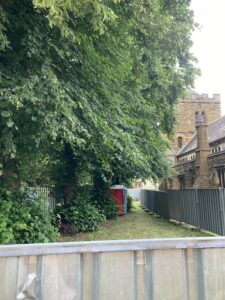
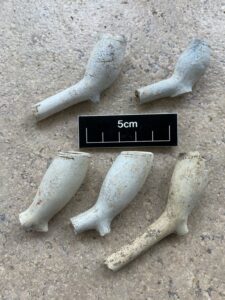
DIG DIARY – DAY 3 Wednesday
A warm day! No sign of the forecast rain so today it’s digging in the sun. By now the scale of what is to be done is more apparent – there’s a lot of it – the length of the building and it’s a long building!
The good news is that bush roots have all been dug out. The digging is reaching deeper layers where we may find more interesting things.
The marquee gives welcome shade to sort and wash the interesting bits from the trays of rubble.
Below is another image from the test trench dig done previously by lead archaeologist, John Buglass. It’s a Victorian bone handle for cutlery. It is a nice example. The black specks characteristic of animal bone show up clearly.
Will we find more of the set perhaps!
[Images: Day 3 dig, thanks to Ruth Thomas]
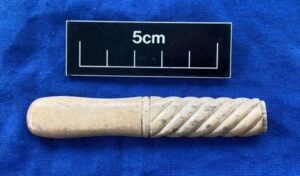
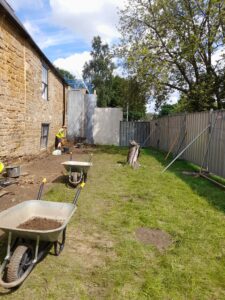
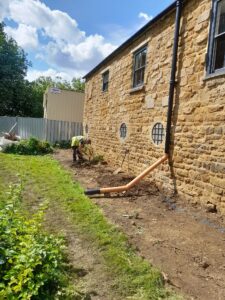
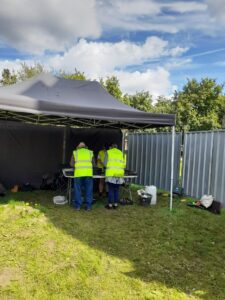
DIG DIARY – Day 4 Thursday
A broiling hot day! Away with the waterproofs and on with the sunblock.
Today’s star find is a 19th century, pipeclay figurine of a dog. Found by one of our Friends volunteer gardeners – not digging weeds this time. She unearthed our nicely preserved canine all in one piece.
We are told by the archaeologists that it’s fairly rare to find a whole one. These figurines were ‘low fired’ so don’t often survive intact.
We don’t have two dogs! It’s pictured before and after a wash. The brown colouring when found is discoloration from the soil. After its wash our perfect pooch is proper white again. White clay had been popular for making figurines way back in time, and in many cultures. Later it gained the name of ‘pipe clay’.
[Images: thanks to John Buglass, Archaeologist]
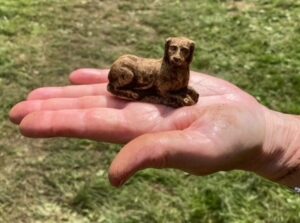
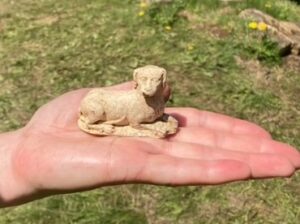
DIG DIARY – Day 5 Friday
As forecast today was a scorcher! Heat comes off that stone wall like an oven. Even the inside of the church is gently warm.
Once again a star find came early – and by a first-time digger. What an experience. Without committing to a date, we learn that the thimble is old. Possibly it’s pre-18th century.
There’s plenty of rubble as the line of diggers stay with their task.
Then yet another interesting item appears: a piece of worked ironstone with finely incised decorative lines. Its architecture looks more in keeping with the church than a domestic building. What is it? So far our archaeologists are undecided. It’s fairly fragile. It has a big socket in relation to the decoration. We wait for an answer on this one.
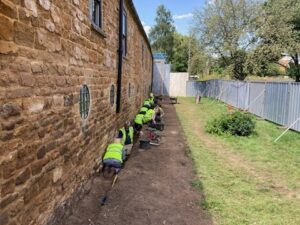
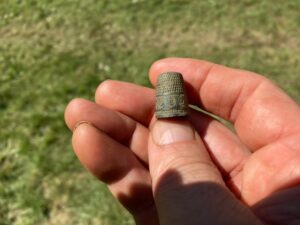
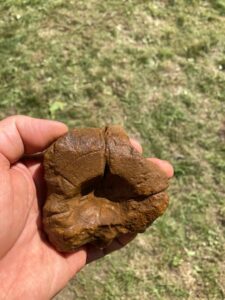
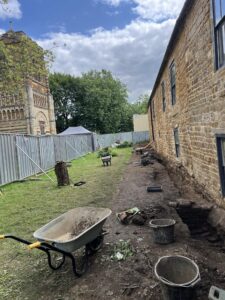
DIG DIARY – Day 6 Saturday
The Dig has a certain air of concentrated energy today. It’s so beautifully cool after the extreme heat of yesterday. The end of the Dig approaches too.
Today’s post features some of the finds from the earlier trial trench. Significant items have been processed and assessed.
The Manning bottle stopper has a link with the church! Thomas Manning, Brewer was not only the ‘next door neighbour’ to St Peter’s but he served as churchwarden there for many years. He donated the oak panelling in the Tower. When he died in 1933 the elaborate sculptured gravestone that once acted as a fireplace mantel in his brewery office was given to the church. It now stands in the nave – a splendid example of 12th-century mason’s art.
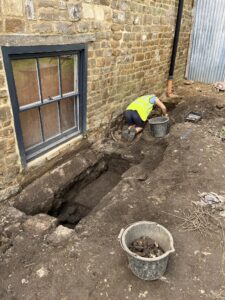
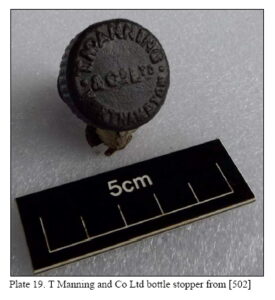
DIG DIARY – Day 7 Sunday
The sun shone – the sky was blue. A good omen: the bees were happy working hard on our glorious blue flowers which paved the entrance to ARCHAEOLOGY FESTIVAL NORTHAMPTON 2024
So many people came to enjoy our program. At last, there was the opportunity to see behind the screens in the churchyard – see archaeology in action. The community volunteer diggers continued to work away with determination in the heat. Visitors got the chance to chat with the 3 professional archaeologists.
Inside in the cool of the church archaeologist Andy Chapman told the story of what lies under the redbrick development between St Peter’s and the Gregory St car park. Then it was off to walk what had once been a site of national importance.
We lost count of the number – people kept appearing. It was a group of at least 60 participants. It was rather like the Pied Piper as Andy led his willing procession between significant stopping places.
Next on the program: into the church for what began as a Talk. It had to be a Talk – there were so many people. Jenny Rose gave her audience a superb overview of the long story of the building, archaeology, history, and art history. Then was the time for visitors to browse, look at the skill of the 12th-century masons, and see the memorial to William Smith ”Father of English Geology”.
Such interesting questions and an appreciative audience!
Residual memory of this Event? Happy visitors. The churchyard buzzing with people. The contribution of the team of volunteer diggers. The extraordinary chance to have 5 archaeologists on site to meet and talk.
And perhaps overall, the pleasure of bringing together so many people to enjoy our Heritage.
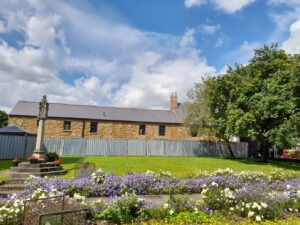
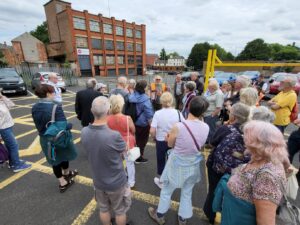
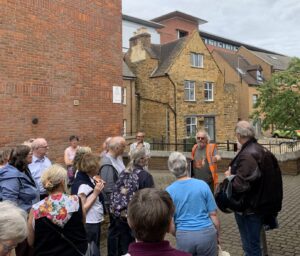
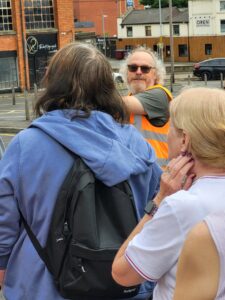
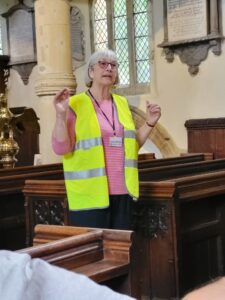
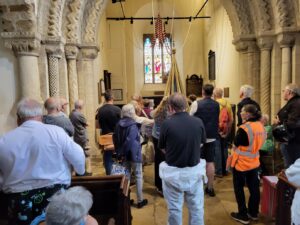
DIG DIARY – Day 8 Monday – Final day of digging
Back to earth in every sense after the festival atmosphere of yesterday!
It’s almost a Dig tradition that finds turn up something special right at the very end. We weren’t disappointed.
Digging what is essentially a Victorian infill, we find a medieval tile … a whole one too.
Then, almost to go with it, the strange-looking pottery fragment with a spike appeared. This caused a bit of head-scratching with our archaeologists — a bit of research and the conclusion that it’s possibly the spike handle of a medieval lamp.
Finds will be assessed further. A Report will be written. Maybe we will know more then. For our final day of digging these medieval bits are not at all bad!
[Images: thanks to John Buglass, Ruth Thomas, Ian Oxborough]
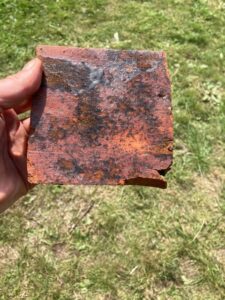
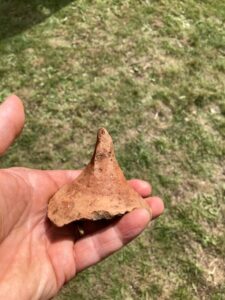
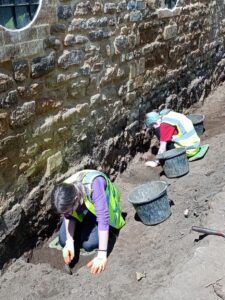
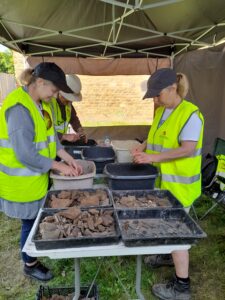
DIG DIARY – Day 9 Tuesday – Postscript
The Community Dig has ended.
Volunteer diggers said goodbye yesterday – this has been such an amazing experience to get ” hands-on” with real archaeology.
Back on site though our archaeologists met to lift a couple of items for assessment. Look what they found as a final surprise!
It’s a highly decorated and probably German-imported stoneware. This fragment of a vessel even has its date: 1666.
No doubt we will get more details about this one!
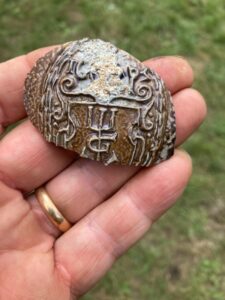

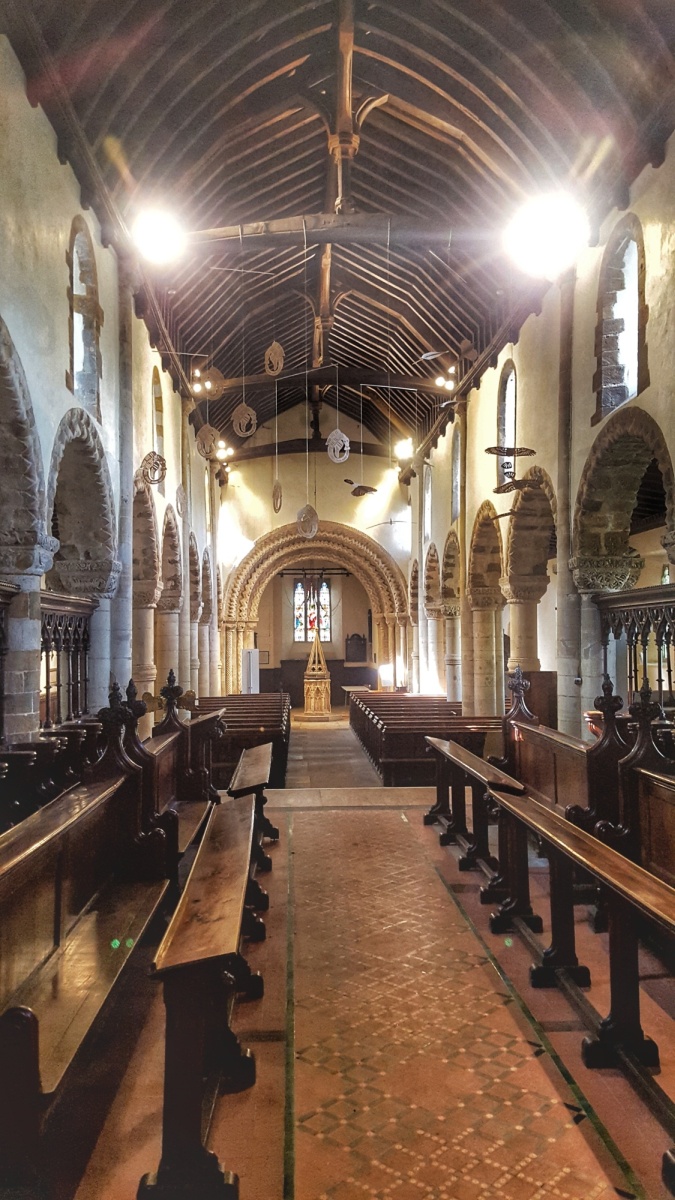
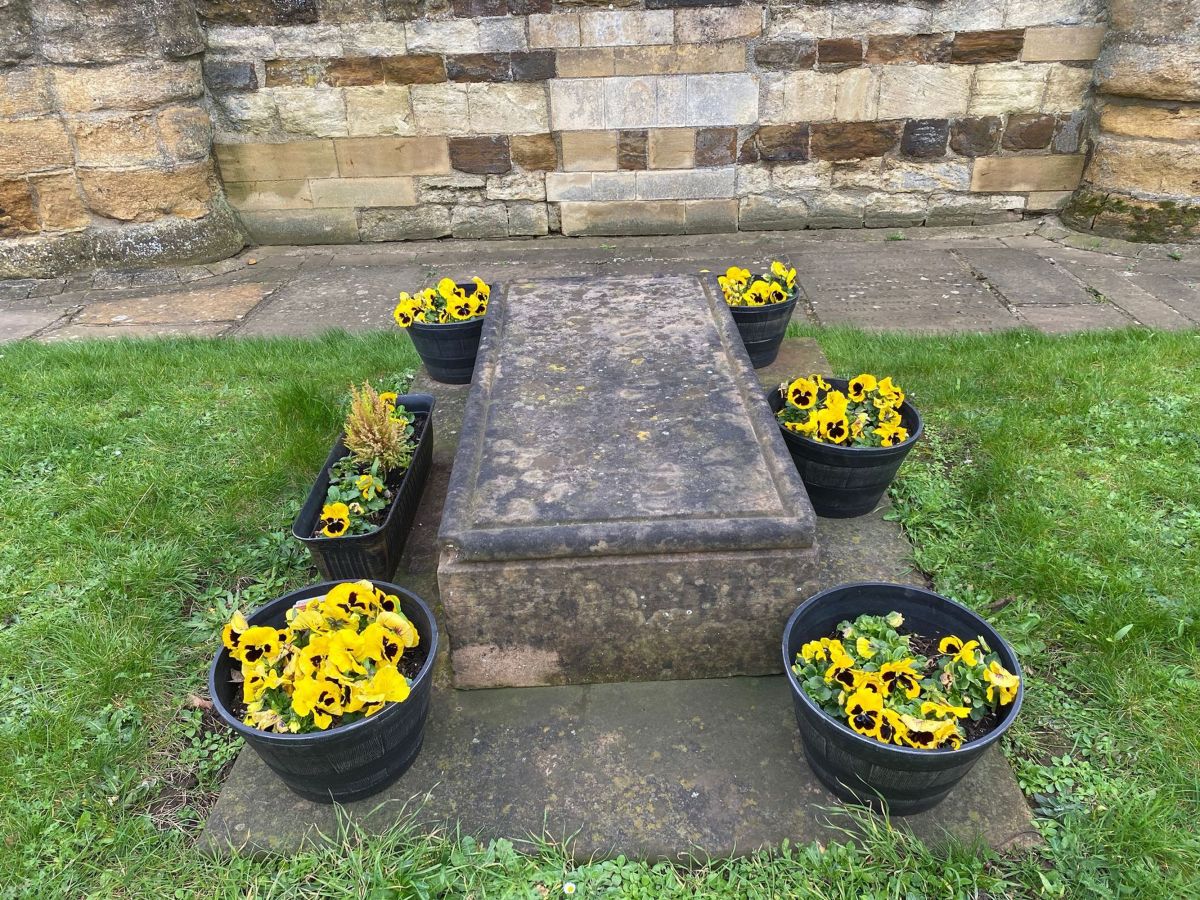
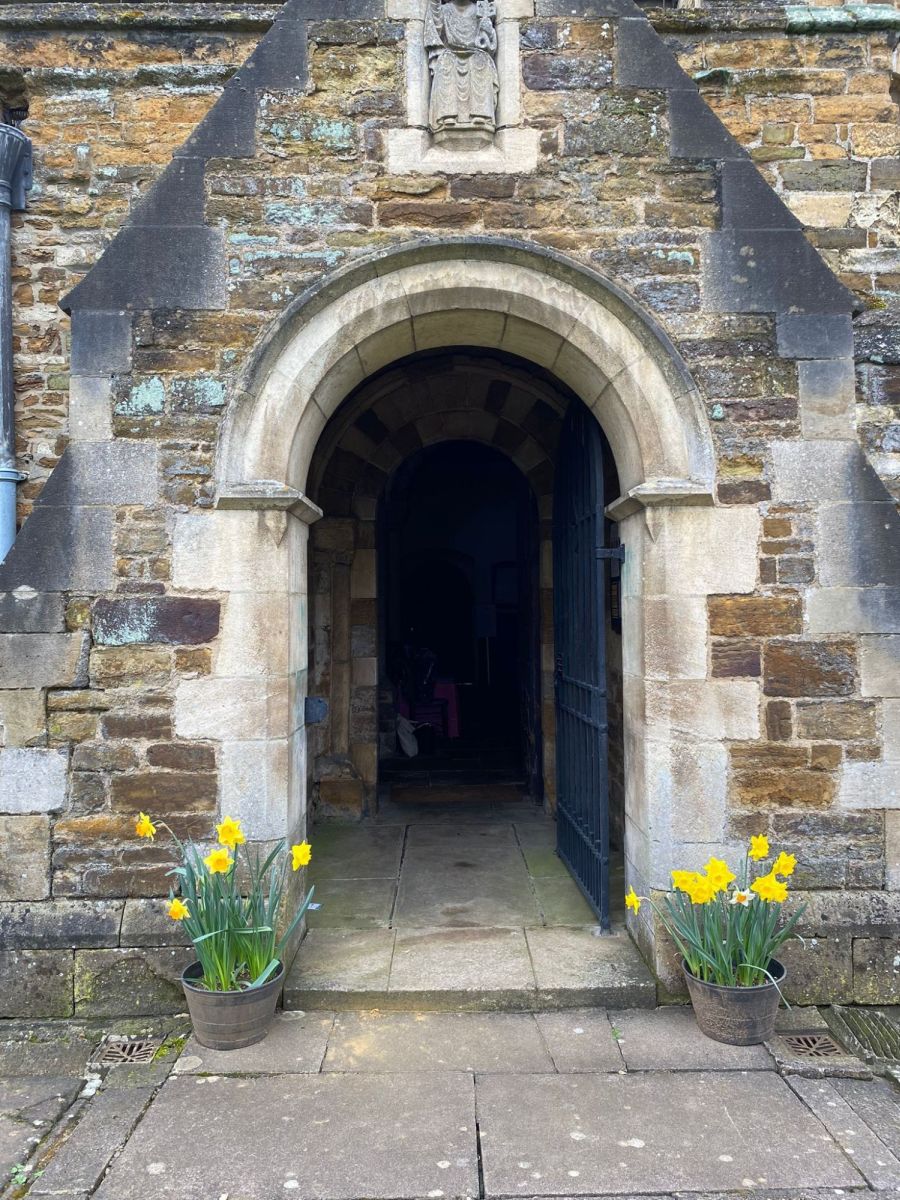
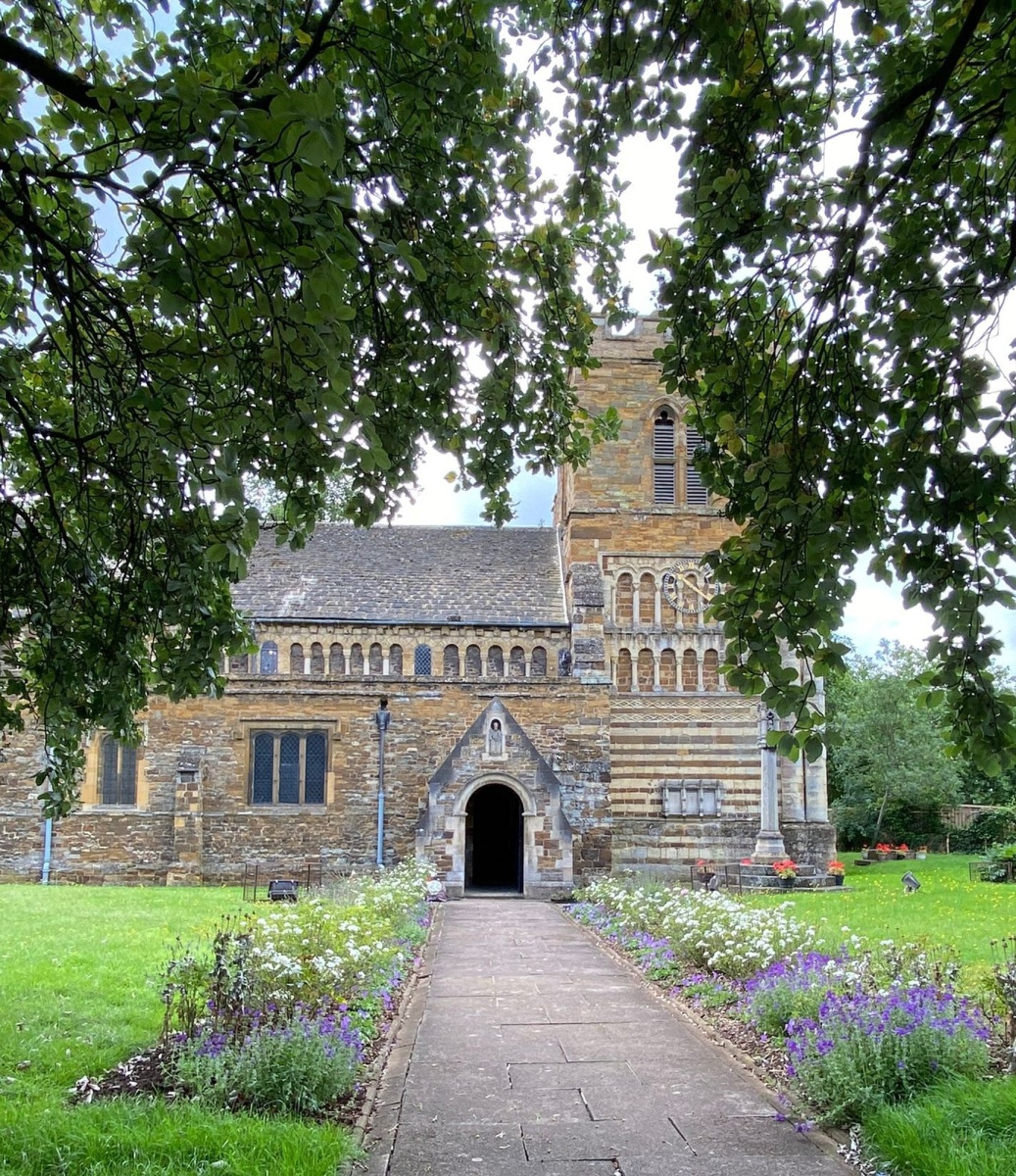
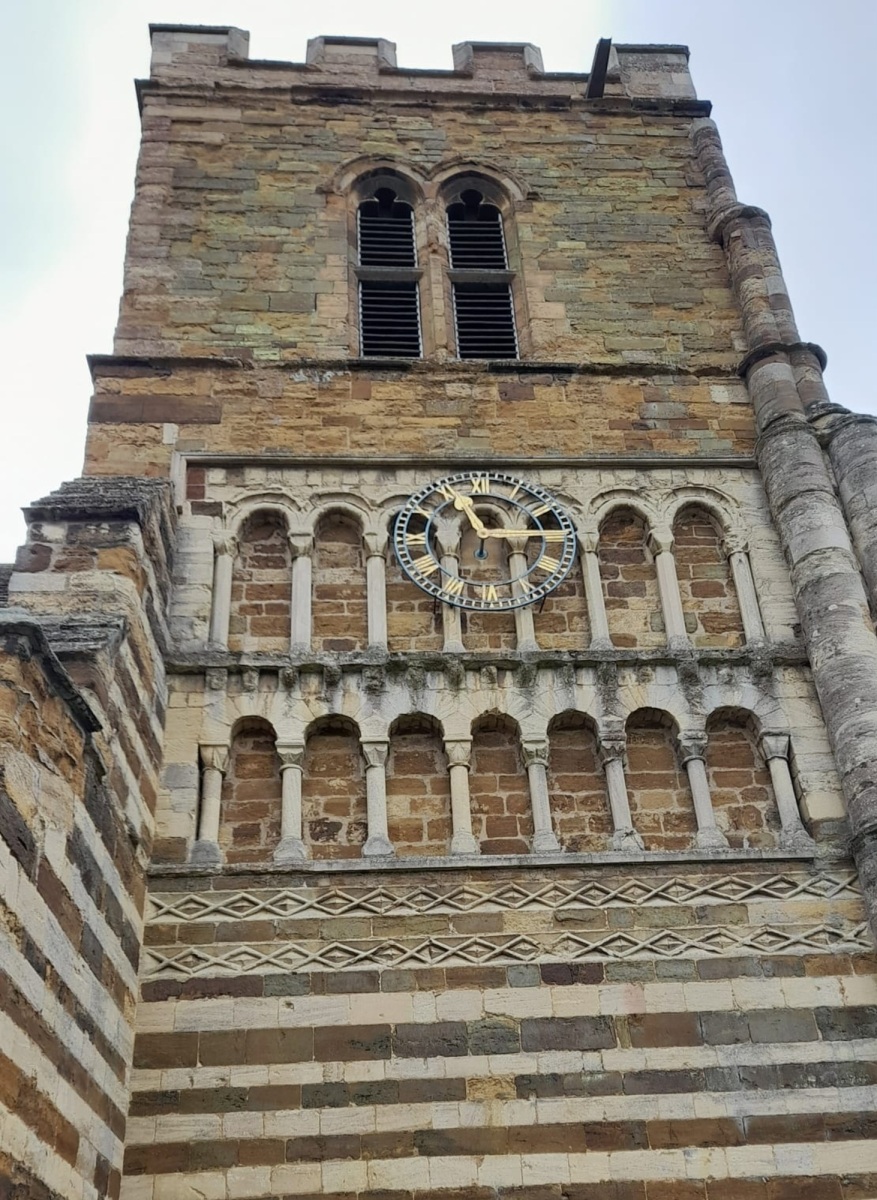
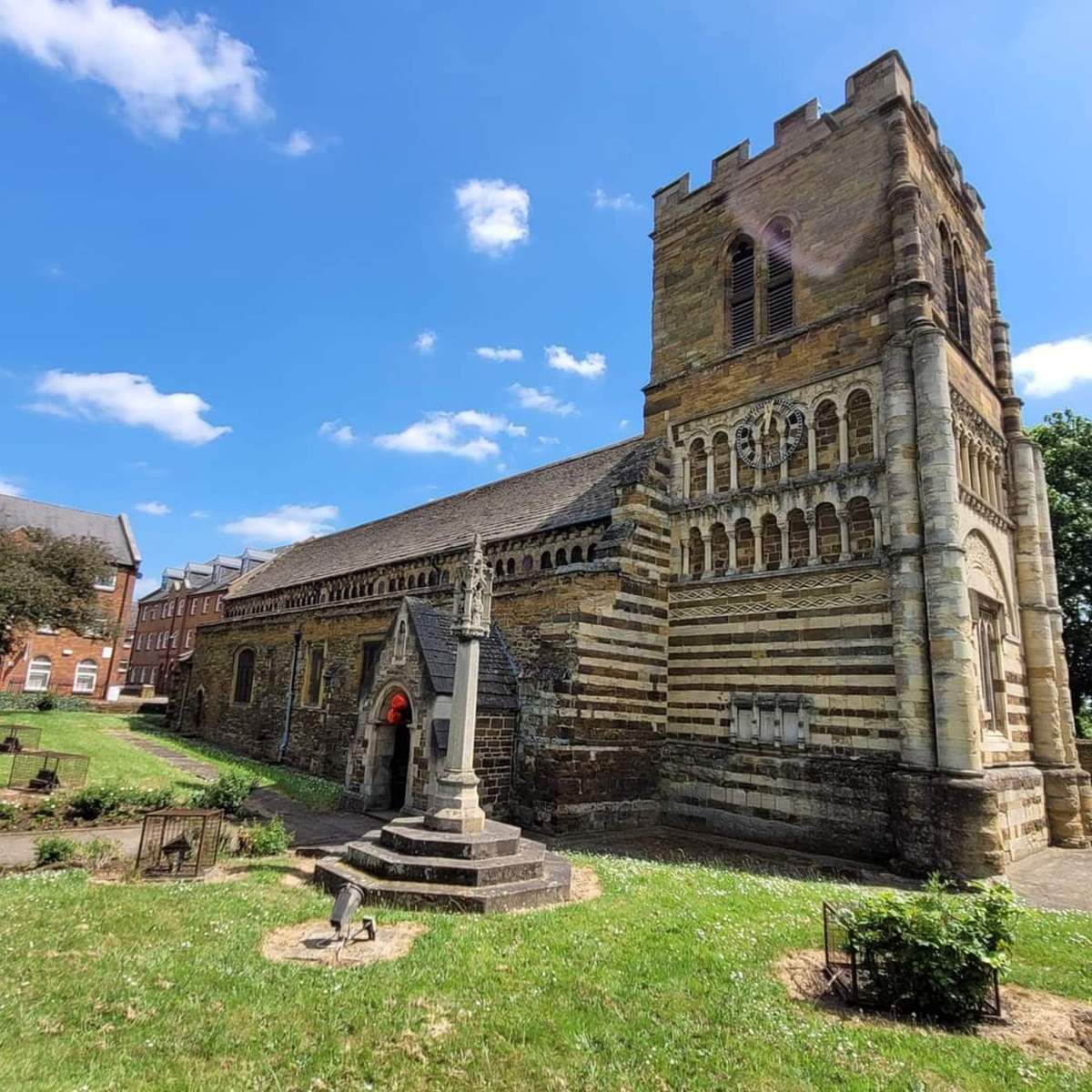
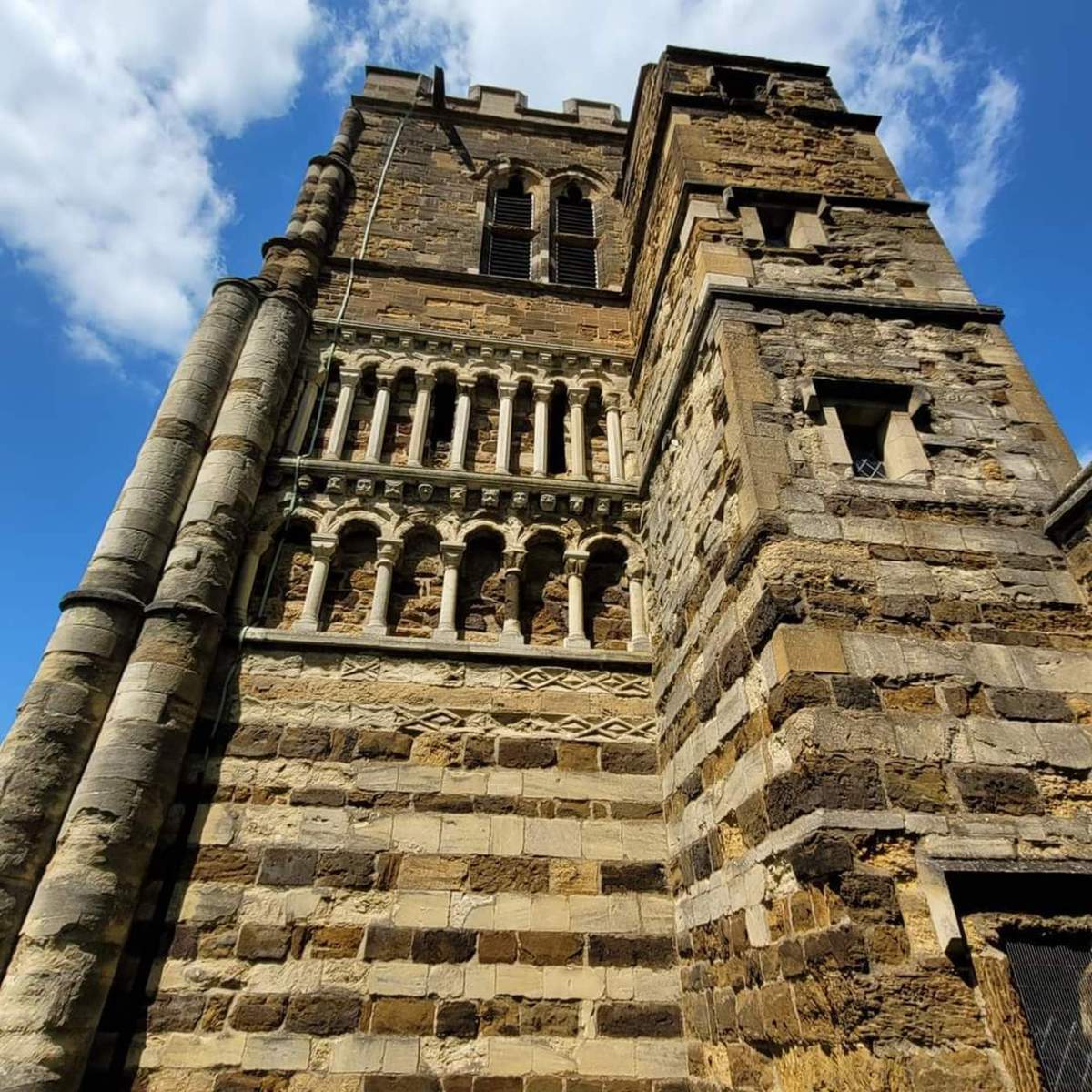
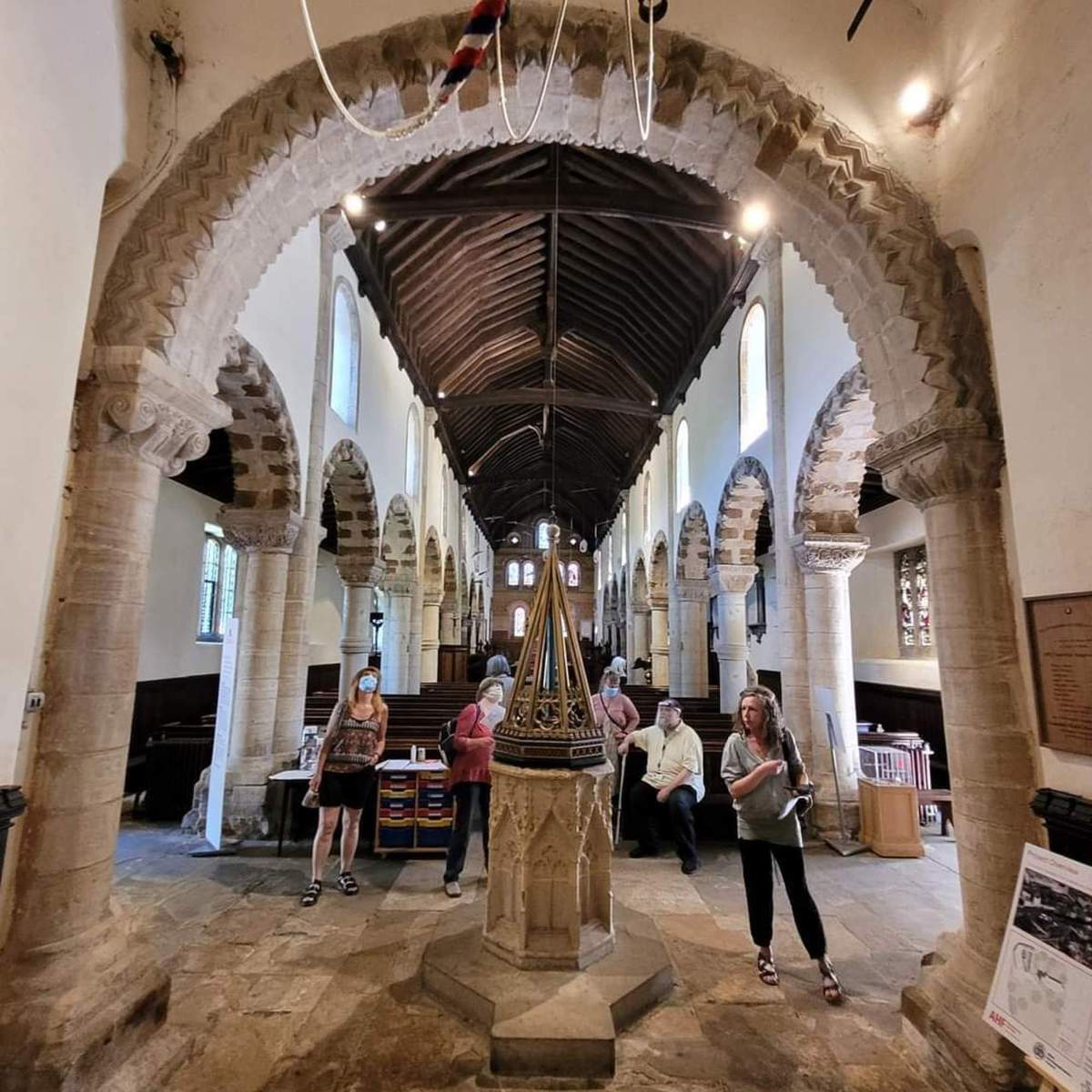
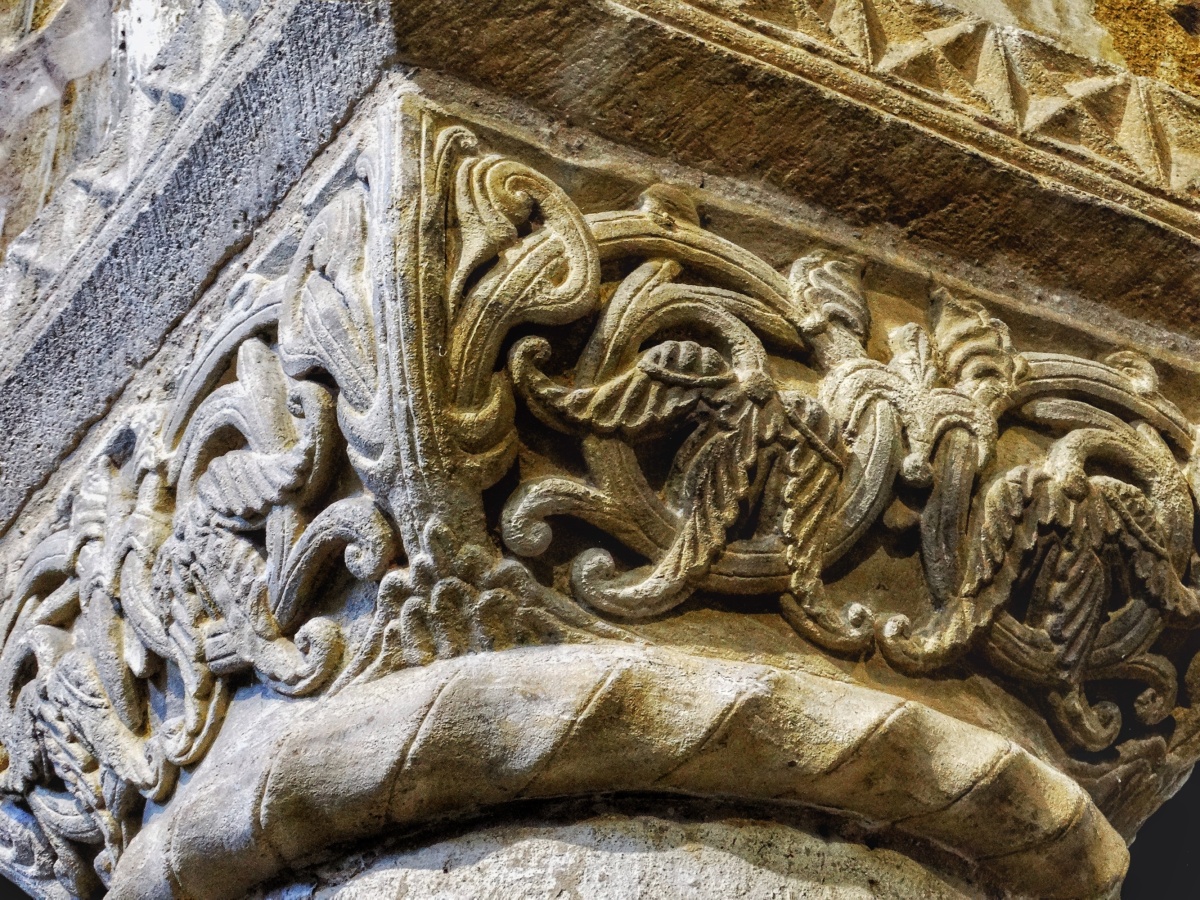
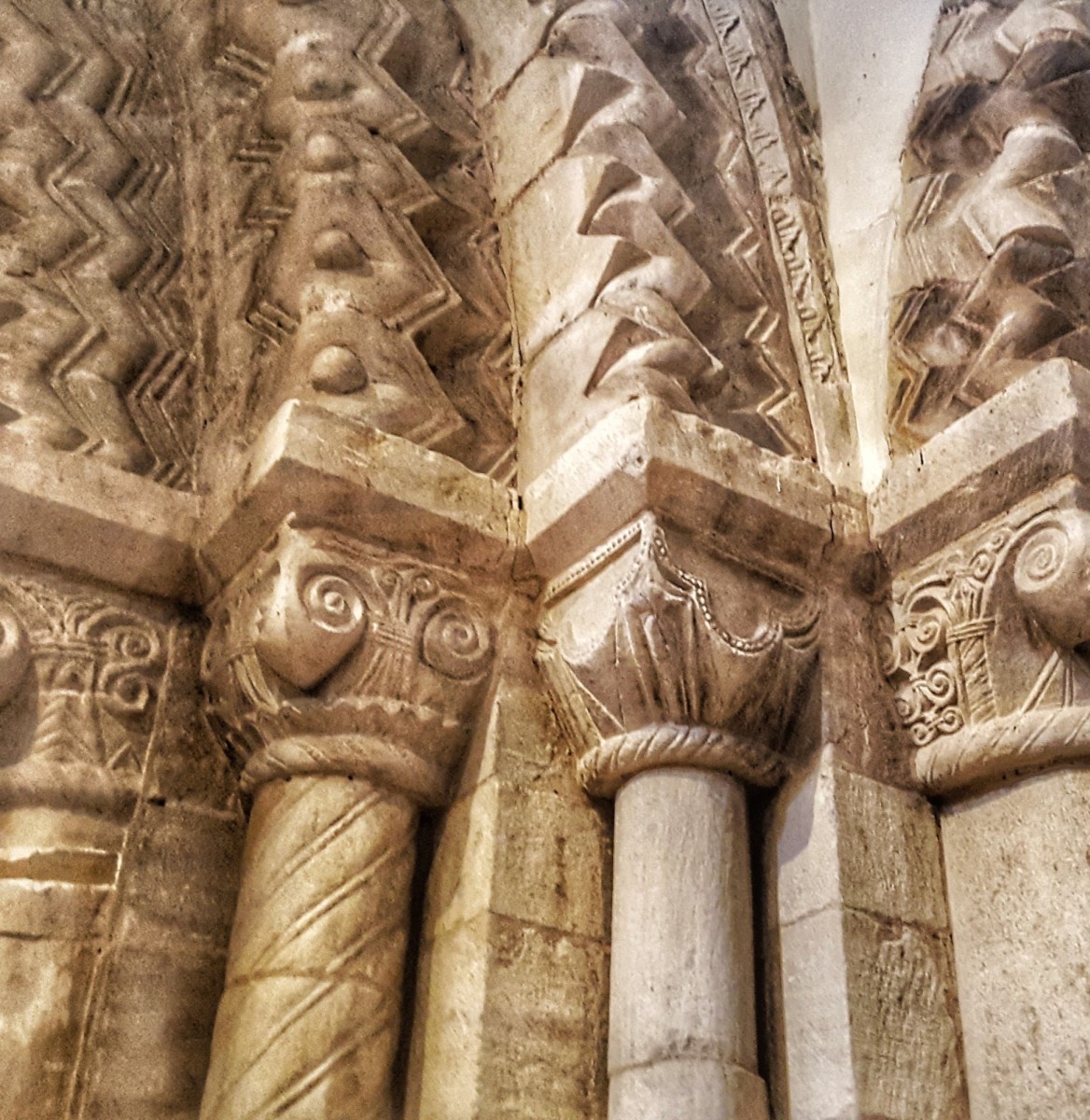
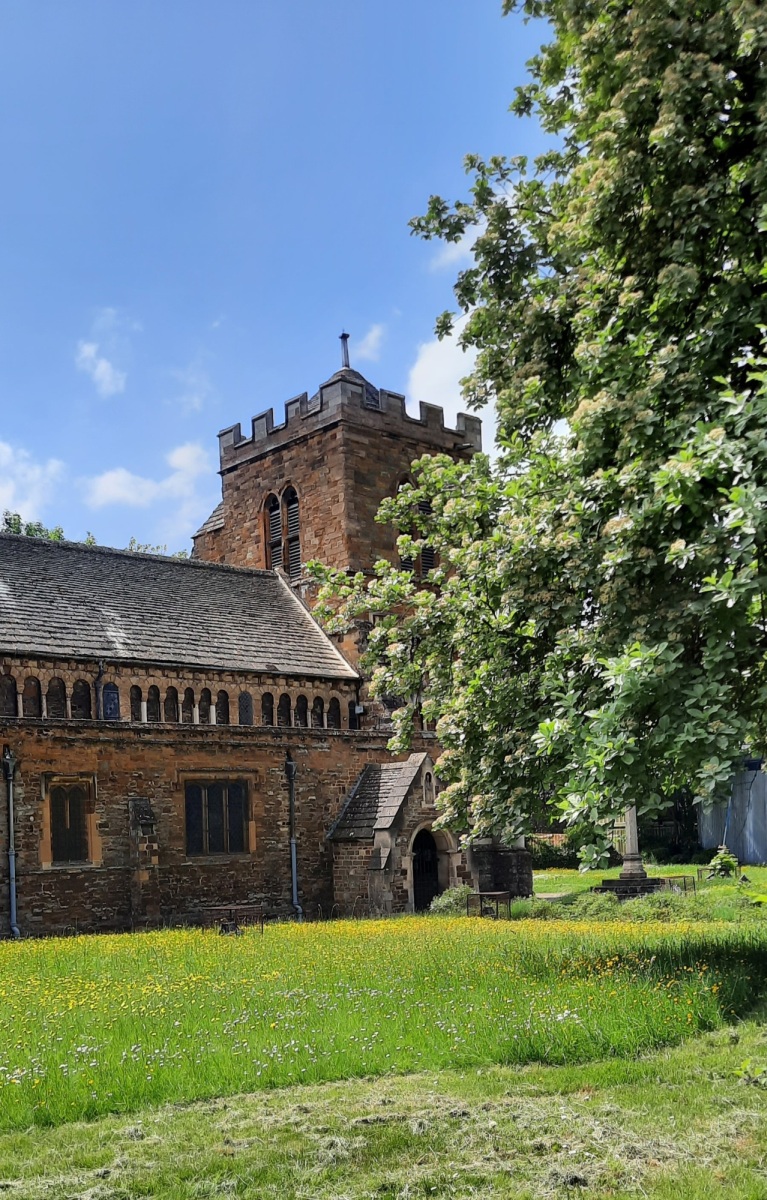
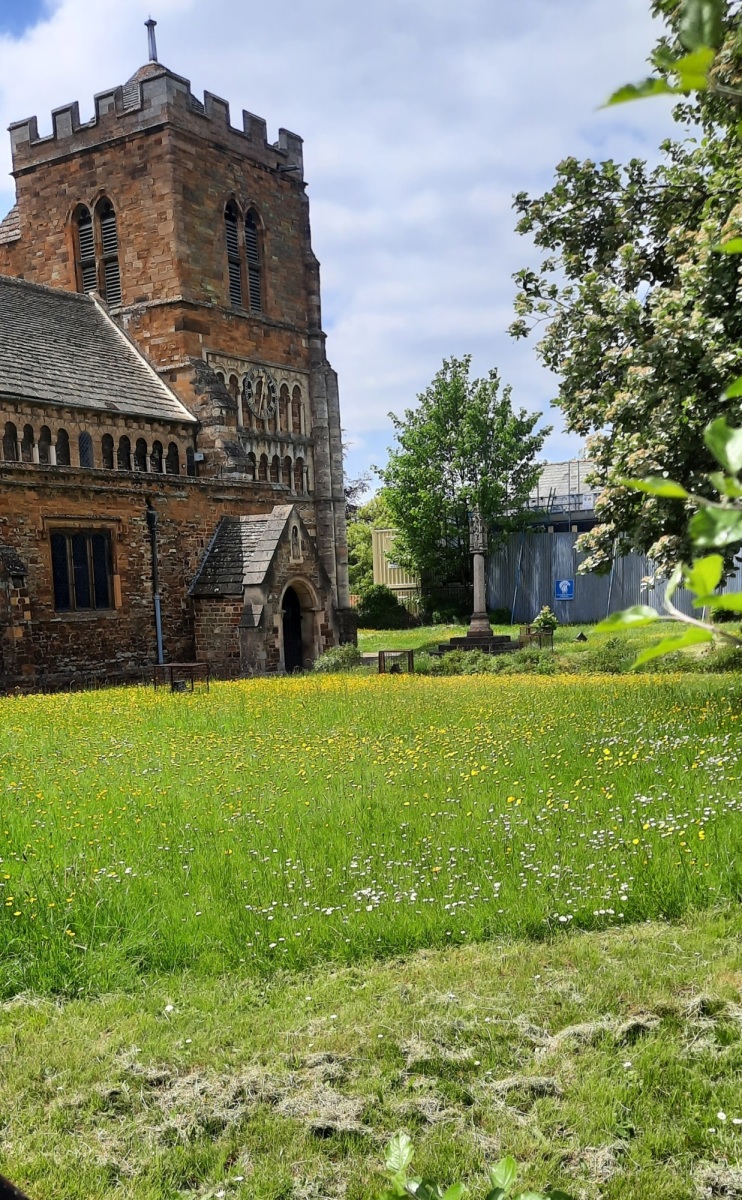

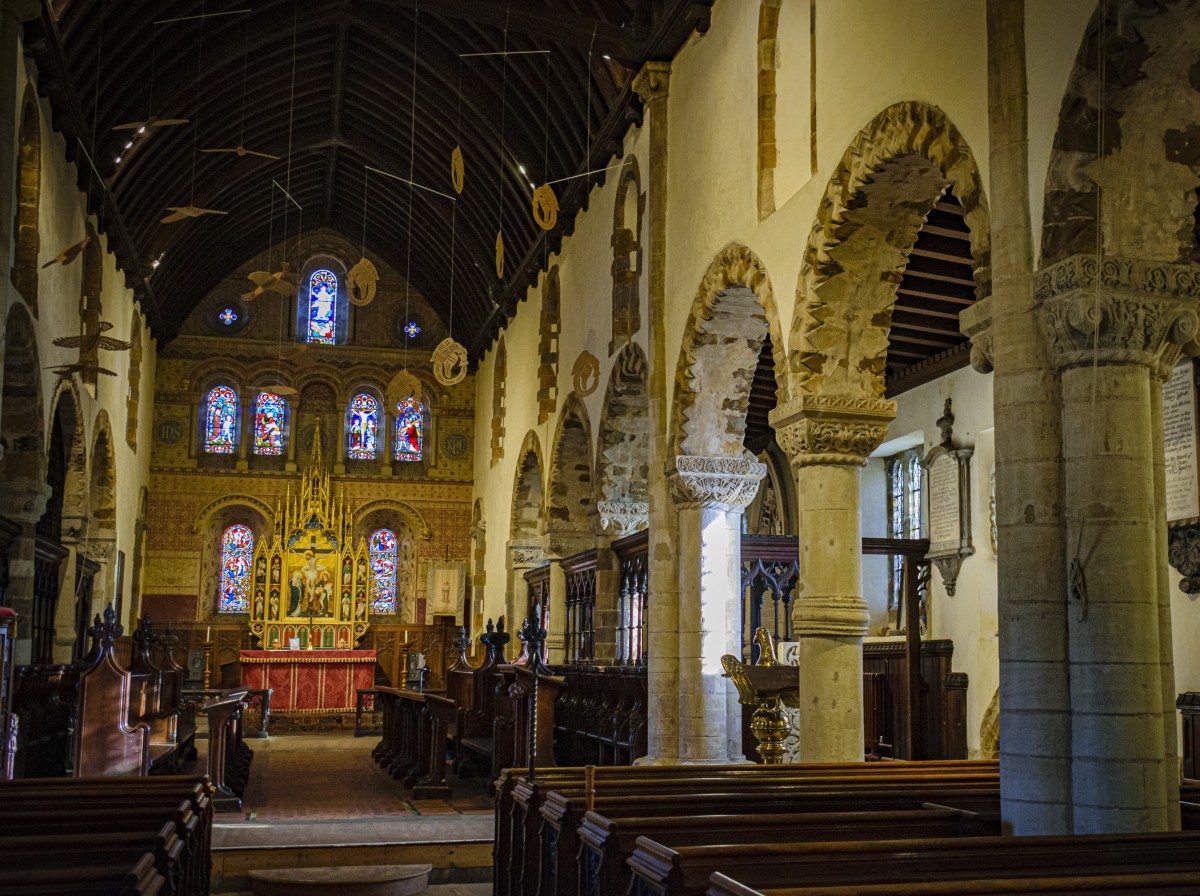
I am so sorry I was away and couldn’t come along. However, it’s marvellous to know that so many people were interested in the dig, and wanted to come along. It’s always fascinating to see and hear about what has been hidden underground for so long.
What a brilliant project this has been. Well done to everyone.